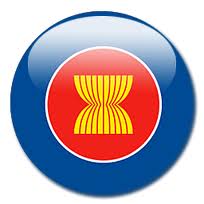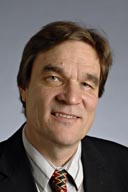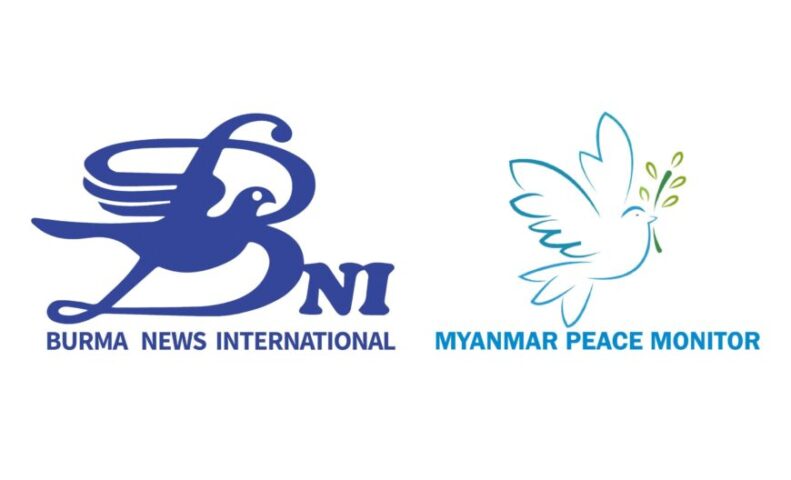The below countries and organisations have been involved in the peace process and or providing humanitarian aid to refugees from Myanmar.
 MPSI
MPSI
To see more about the Myanmar Peace Support Group led by Norway and members Australia, EU, UK, World Bank, United Nations please see the MPSI page.
In addition to the MPSI, the UN has been granted access to both the government and KIO to provide relief to Kachin refugees in December 2011, and since March 2012. It has agreed on 30 April 2012 to assist the government in conducting its first census in 31 years. The project, which could prove key to empowering Myanmar’s more than 100 ethnic groups, will start in April 2014, ahead of the next general election in 2015.
![]() Japan – Nippon Foundation
Japan – Nippon Foundation
The Japanese government has been supporting the ethnic peace process through development assistance focusing on improvement of people’s livelihoods.

In June of 2012, the Japanese government appointed Sasakawa Yōhei, the chairman of the Nippon Foundation as the Ambassador for the welfare of ethnic minorities in Myanmar to coordinate its assistance for the ethnic peace process. The Japanese foundation has been working with the UNFC on their plans for the peace process. They were also requested by the UNFC to act as a foreign mediator during negotiations with the government. The government has not responded to the UNFC’s request but allowed members from the Nippon Foundation to attend several meetings as observers.
Nippon Foundation donated $3M for humanitarian aid relief to be distributed in ethnic minority areas of Myanmar, beginning with an initial aid package of $300,000 and the monitoring of its distribution. U Aung Min said that the Japanese government eventually plans to provide another $300M in support for refugee relief programs, $60M of which will come directly from the Nippon Foundation. The aid package was officially launched on Dec. 22, 2012 in Mon state.
Timeline of events:
April 24, 2012: Three UNFC Central Committee members met with the Japanese Nippon Foundation and some government officials in Tokyo to discuss the ongoing conflict and peace talks with the Myanmar government.
June 2012: Sasakawa Yōhei was appointed as the Japanese government’s goodwill ambassador for the welfare of ethnic minorities in Myanmar. During a trip to Myanmar the same month, Yōhei met with President Thein Sein and National League for Democracy (NLD) opposition leader Daw Aung San Suu Kyi.
Sept. 23, 2012: The Nippon Foundation signed a memorandum of understanding (MOU) with the UNFC for the relief plan.
Oct. 6, 2012: The Nippon Foundation signed a MOU with the Myanmar government allowing them to carry out humanitarian aid relief in the ethnic areas.
Mid-October, 2012: A twenty member UNFC delegation, with representatives from 10 ethnic minority groups, worked out the details of the relief plan with the Nippon Foundation during the Conference on Emergency Humanitarian Aid to Myanmar Ethnic Groups in Tokyo. This was followed by a press conference at the Nippon Foundation’s head office where they presented an outline of the plan on Oct.18.
Dec. 22, 2012: The project was launched during an official ceremony in Mon state capital Mawlamyine, during which representatives from the foundation gave emergency supplies worth $70,000 to the New Mon State Party (NMSP). The supplies included 50 tons of rice, medical supplies for hospitals and 500 boxes of traditional herbal medicine.
Jan. 12, 2013 Nippon Foundation donated 1,200 bags of rice to Pa-O National Liberation Organization (PNLO) peace group at Taunggyi Hotel in Taunggyi, Shan state.
Japanese Ministry of Foreign Affairs documents:
Main Cooperation Projects of Assistance to National Races![]()
Assistance towards Myanmar’s National Races![]()
Three Main Pillars of The Nippon Foundation’s Projects![]()
Neighboring China, India, Thailand and Bangladesh
Four of Myanmar’s neighboring countries are all critical players and stakeholders in the country’s ethnic politics. Sharing a porous border with the same ethnic populations living on both sides means that Myanmar’s ethnic problems also affects them. The Myanmar government’s policies regarding the peace process will influence the stability of the border for its neighbors. Some of these influences include: refugees/IDPs, drug trafficking and economic development.
![]() China
China
China is a key player in Myanmar’s ethnic puzzle as its powerful neighbour to the North. In recent years, China maintains its “no-involvement policy in Myanmar’s internal affairs and calls for a peaceful solution. Yunnan officials and intelligence agents maintain close, but largely informal contacts with some of the ethnic armed groups, namely the Kachin (KIO), Wa (UWSA), Kokang (MNDAA) and Mongla (NDAA-ESS). China plays a crucial role in ensuring and providing for both the livelihood and survival of these groups e.g. economic assistance, trading, provision of electricity, water and telecommunications and unofficially accepting refugees. The Chinese city of Ruili on the border has also been an important venue for several meetings between the KIO and Myanmar government’s peace team.
![]() India
India
India has established military ties with Myanmar to tackle cross-border insurgency and has committed to develop border areas and trade and investment agreements. During Indian PM’s visit to Myanmar in May 2012, the Myanmar government invited India to assist in the development of the Naga Self Administered Zone in Sagaing Region and Chin State, including the opening of border markets to boost local economies. India is implementing the Kaladan Multimodal Transport Project that involves upgrading the Sittwe port and constructing a highway to connect the town of Paletwa in Chin state to the Indian border in Mizoram state. This flagship project which is projected to be completed by 2015, will revitalise the economy of the area and link it with important commercial and shipping arteries.
—28 Aug 2012: Home Minister Mullappally Ramachandran told the Lok Sabha, India’s lower house of Parliament that Myanmar has failed to act on promises to prevent anti-Indian insurgents from operating from inside its territory. He added that a number of groups have camps in Myanmar’s Naga Hills such as the Manipur-based People’s Liberation Army, United National Liberation Front, People’s Revolutionary Party of Kangleipak; Naga insurgent group like NSCN-K and ULFA (anti-talk faction) and NDFB.
![]() Thailand
Thailand
Thailand similarly maintain close contact with border militia groups (RCSS/SSA, KNU, KNPP and NMSP) through local authorities and intelligence agents. Currently Thailand is developing special economic zones, large industrial projects and roads through the ethnic areas both along the country’s border and neighboring Myanmar. In the past, Thailand served as a mediator in talks between ethnic militia groups and government. However recently, including the latest visit of President Thein Sein to Thailand in July 2012, the issue of ethnic conflict was not addressed. Thailand hosts over 130,000 refugees and has expressed hope to repatriate them following the transition to a civilian government. It has also been the site of several important peace talks.
 ASEAN
ASEAN
For the most part, ASEAN and member countries have not participated in Myanmar’s peace process. The small role that the alliance have played involved information and experience sharing for peace negotiations with armed ethnic groups and addressing the ethnic crisis in Rakhine state.
Committee for Ethnic Minorities of SRV (Vietnam): The Committee for Ethnic Minorities of SRV (Vietnam) met with Myanmar’s Ministry of Border Affairs in Yangon on Dec.10, 2012. During the bilateral consultation the signing of an amendment was made to the Agreement of Cooperation between Ministry of Border Affairs and the Committee for Ethnic Minorities of SRV. This was aimed at strengthening the friendship between the two countries through exchanging experiences that will lead to further cooperation in cultural, education, social affairs and economic affairs in border and rural areas.
In an event organized by Geneva-based Center for Humanitarian Dialogue, Chairman of the Indonesian Red Cross (PMI) and former vice president Jusuf Kalla and a Filipino government team working on insurgency in the country’s south met with Aung Min and members of the Myanmar Peacemaking Work Committee in Naypyidaw on Sept.10, 2012. The former Indonesian vice president was joined by former law and human rights minister Hamid Awaluddin, who led the government’s negotiating team in the Helsinki peace talks with the Free Aceh Movement (GAM), and former Indonesian Military (TNI) Commander Gen. Endriartono Sutarto.
The Myanmar Peace Center invited ASEAN Foundation Executive Director Dr. Makarim Wibisono and Mr. Pratap Parameswaran, an official from the ASEAN Secretariat, for an informal brainstorming session on the peace process in Myanmar. Information about the ASEAN Institute for Peace and Reconciliation (AIPR) that was launched during the ASEAN Summit in November, 2012 in Phnom Penh, Cambodia, was discussed during the meeting.
![]() USA
USA
The U.S. involvement in the Myanmar peace process has been largely through the issuing of statements and making recommendations to the government and some ethnic armed groups.
President Barack Obama made a historic visit to the country on Nov.19, 2012 with Secretary of State Hillary Rodham Clinton. This was the first ever trip by a U.S. president to Myanmar. During the trip Obama mentioned the importance of ending the conflict in Kachin state and solving the crisis in Rakhine state.
Hillary Clinton also sent a delegation to visit Myanmar and Bangladesh to learn first-hand about the situation in Myanmar’s Rakhine State, including areas in the vicinity of the border. The delegation, led by the Bureau of East Asia and Pacific Affairs’ Principal Deputy Assistant Secretary Joseph Yun and Ambassador Derek Mitchell, visited from Sept. 7-10, 2012.
US Ambassador Derek Mitchell led an 8 member delegation to visit Kachin state to visit relief camps and meet with local leaders in mid-December 2012. Mitchell discussed the possibility of providing aid to IDP camps in KIA controlled territories. He also visited Karen state to meet with key KNU leaders in Hpa-an in early January, 2013. During this time, Mitchell and Karen leaders discussed a range of issues about the current political climate, the ceasefire between the KNU and the government, and ceasefires with the other ethnic armed groups.
The U.S. has provided aid through USAID for Peace and Reconciliation.
According to USAID’s 2013 factsheet, its program covers strengthening the capacity of key leaders within ethnic and religious groups and between communities and newly formed government structures (focusing on women), landmine assistance, and humanitarian assistance. In the fiscal year of 2012, USAID and state humanitarian assistance to the country amounted to over $30 million which were channeled through OCHA, UNICEF, WFP, UNHCR and other INGOs.
![]() Finland
Finland
Finland’s Foreign Ministry has appointed a Special Representative to regional peace-mediation tasks Kimmo Kiljunen. He visited Myanmar and Thailand in April 2012 to prepare an international coordination meeting on peace mediation. It was agreed a seminar in Yangon in the beginning of June co-organised by Finland and the MPSI.
http://formin.finland.fi/public/default.aspx?contentId=246466&nodeId=23&contentlan=2&culture=en-US
